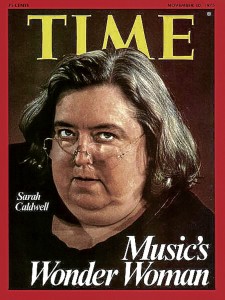
A curious chapter in the autobiography of National Artist for Music Lucrecia Kasilag revealed the Cultural Center of the Philippines’ best-kept opera-production figure.
In her own words, the late National Artist, who was then CCP president, noted that a “hefty $250,000 [roughly P10-million today] was paid to the equally hefty Sarah Caldwell of the Boston Opera to produce the English version of Mozart’s ‘Magic Flute.’”
Exactly 30 Christmases ago, the CCP had a cultural tie-up with the Opera Company of Boston headed by the eminent Caldwell, who was hailed as “one of America’s best-known and most adventurous conductors and opera directors.”
It was the year tenor Noel Velasco won the Pavarotti International Voice Competition in Philadelphia. A number of Filipino artists and cultural workers were hauled off to Boston to train under the aegis of Caldwell’s opera company.
Among those who undertook training and opera exposure in Boston were singers Gamaliel Viray and Dodo Crisol; promising mezzos Luz Galvez and Amy Bonnevie; and cultural workers Ma Guevara and Ed Manalo, who recently passed away.
Expensive package
The expensive opera package didn’t escape the eye of the anti-Marcos activists who picketed the opening night of one production in Boston. They claimed the tie-up was more in favor of the Boston ensemble than Filipino artists, and that the production was an insult to a country in deep economic crisis.
Reasoned out Caldwell to this writer in 1981 at the height of the “Magic Flute” controversy: “I don’t think we have to apologize for the economic problems of the entire world and the fact that they affect us. This [opera] company will stay alive, and I am very proud of the cast that we have been able to assemble. The pressure to present the great stars is always there, but, generally, by the time they become great stars, they can’t sing anymore anyway. You will hear that there are not that many Sarah Reeses and Noel Velascos that come along; we are going to make our own stars and that will be fun.”

The tie-up didn’t sit well with other opera cliques which could hardly raise a million for their productions.
Kicked out
When they heard of the gargantuan opera subsidy given to Caldwell’s Boston company, not a few protested, among them soprano Fides Cuyugan Asencio.
In one workshop conducted by Caldwell in Manila, Asencio butted in and was bodily brought out of the forum.
Noted Kasilag in her memoir, recalling that incident: “The stentorian Ms Caldwell did not make many friends here, least of all with a friend, Fides Cuyugan Asencio, whom she threw out of her seminar for butting in. You listened to Caldwell, you didn’t ask, you didn’t comment.”
What resulted in that tie-up was the formation of the Opera Company of the Philippines, which mounted Mozart’s “Magic Flute” as its inaugural presentation on Jan. 14, 1982. In the opera were Velasco as Tamino; Viray as Papageno, alternating with Robert Orth; and Lilia Reyes and Jovita Castro alternating as Pamina.
Leading the Philippine Philharmonic in that 1982 CCP production was Caldwell herself, who is described by Time magazine as America’s “Music’s Wonder Woman,” and the first woman conductor to be seen at the Metropolitan Opera starring her best friend, soprano Beverly Sills, a one-time Manila visitor.
When Caldwell died in 2006 at age 82, American diva Sills—who sang at the Meralco Theater in 1969—recalled: “Some of the most creative work that many of us artists have done has been with Sarah. Some of the most aggravating, as well. She had a million different ways to do one thing and was never satisfied until she had tried them all.”
An American opera observer noted that while Caldwell was, no doubt, “brilliant as she was in presenting operatic spectacles, she was also equally erratic and impetuous away from music, particularly in business affairs.”
Tainted reputation
The cultural exchange Caldwell tried in Manila in 1981 did not work well with Soviet arts groups in 1988. It resulted in a financial disaster that tainted her reputation.

Caldwell was the subject of two memoirs: “Challenges: A Memoir of My Life in Opera,” by Caldwell with Rebecca Matlock (Wesleyan University Press, 2008); and “Sarah Caldwell: The First Woman of Opera,” by Daniel Kessler (Scarecrow Press, 2008).
The books are ideal companions for opera-lovers who want to relive her productions from “Boris Gudonov” to “Tosca.”
The review has an ironic summation of Caldwell’s life thus: “In the end, Caldwell had amassed three-dozen honorary degrees; the National Medal of Honor from Bill Clinton; and $8.5-million in unpaid bills of her opera company.”
One will remember Sarah Caldwell as opera’s tireless warrior with her words during that Manila encounter of 1981: “Every country should strive to bring music to all people regardless of social backgrounds. And, by saying that, one does not say that opera is any less precious or any less special. It just means that our people are entitled to experience the precious special things in life.”













































